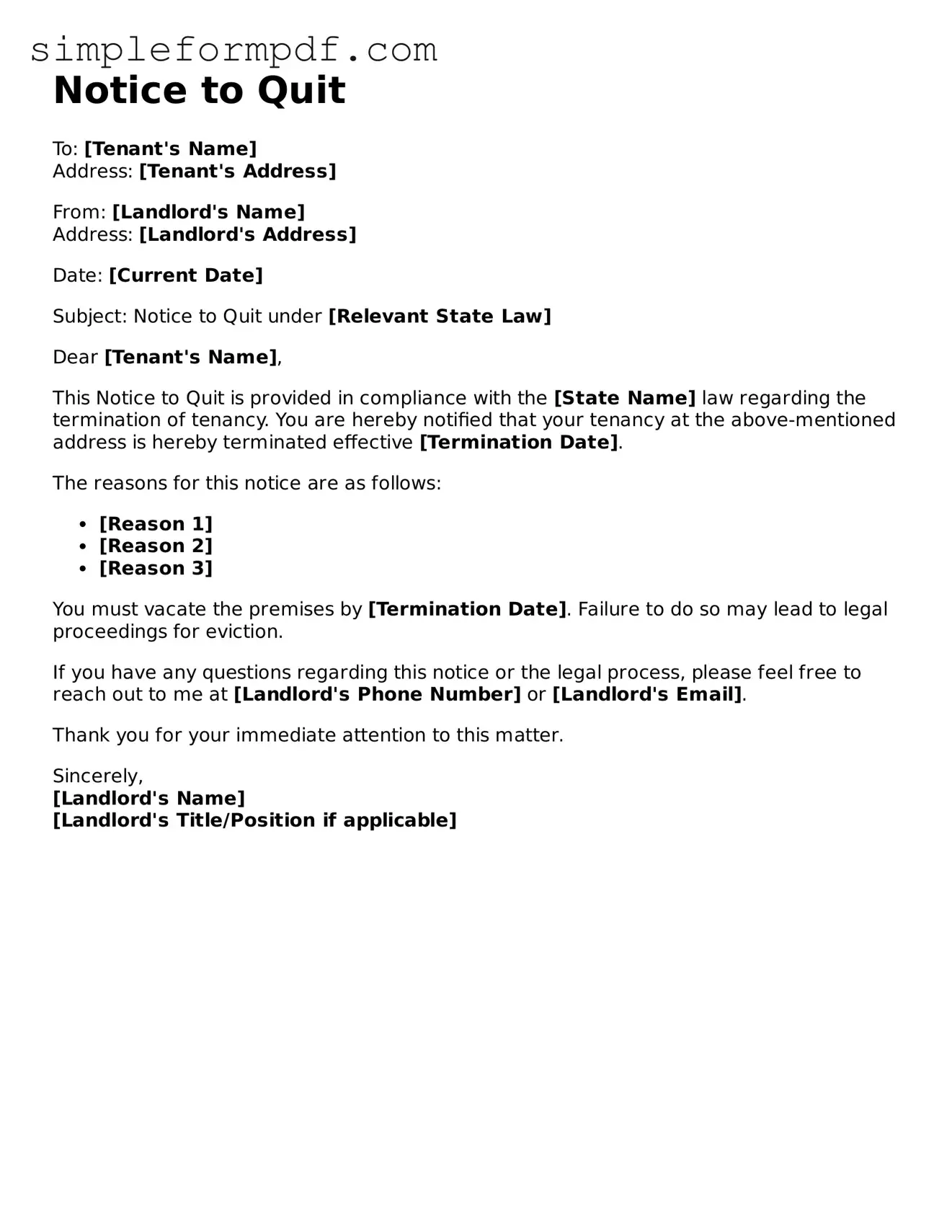Fillable Notice to Quit Template
The Notice to Quit form is a legal document used by landlords to inform tenants that they must vacate the rental property by a specified date. This form outlines the reasons for the eviction and provides the tenant with a clear timeframe to respond or leave. Understanding how to properly complete this form is essential for both landlords and tenants; click the button below to get started.
Launch Editor
